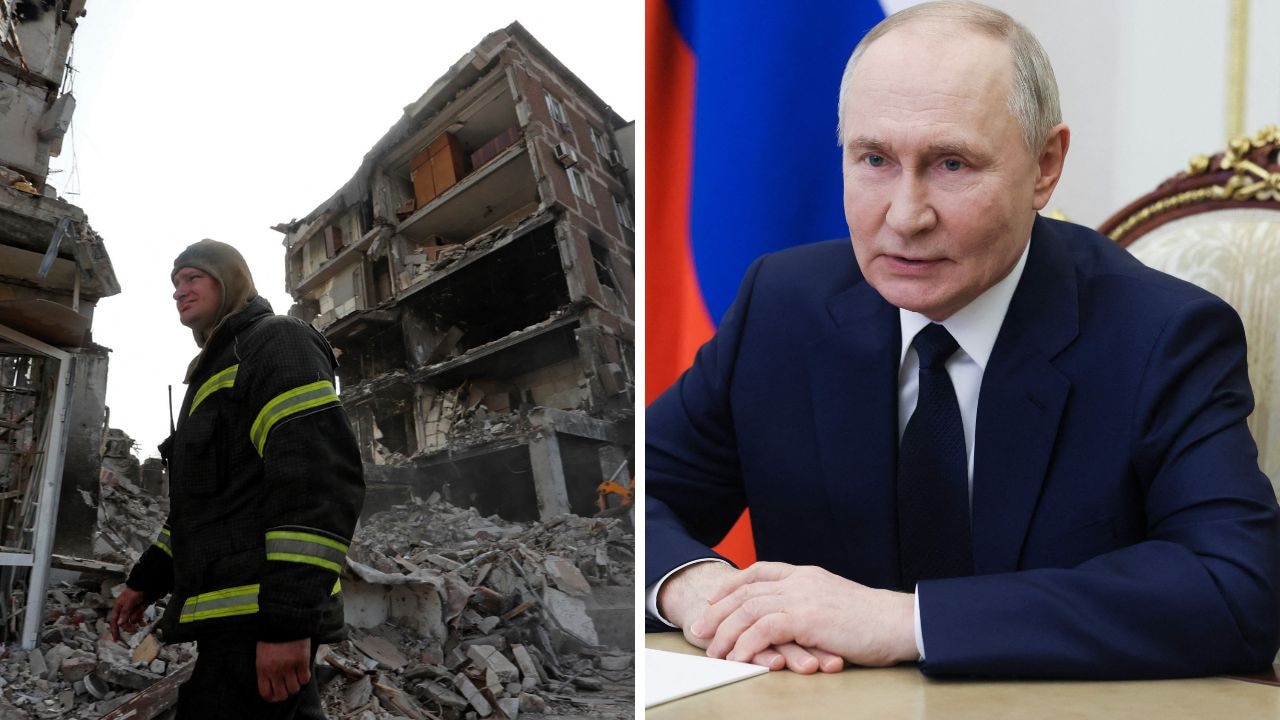Eight years of death, destruction and misery. Now Syrians are asking, ‘what was it all for’?
Eight years after the bloodshed began, Islamic State has been virtually defeated, but has the human cost of the Syrian Civil War been worth it? Middle East correspondent Ellen Whinnett reports.

World
Don't miss out on the headlines from World. Followed categories will be added to My News.
IT cost 500,000 people their lives, sparked the biggest migration crisis since World War II and spawned a global terror group the likes the world had never seen. Now, after eight years of bloodshed, observers are looking at the Syrian civil war and wondering what the point of it all was.
The dictator Bashar al-Assad remains as president, his allies Russia and Iran emboldened and empowered by their success in keeping him in office.
Thirteen million Syrians are homeless, seven million of them in other countries which are struggling to meet the financial commitment of housing them.
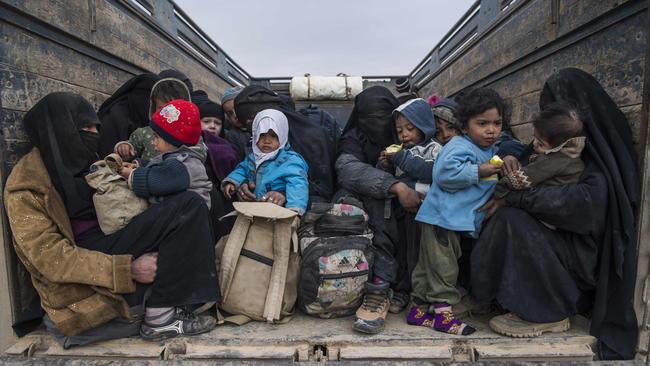
European politics is buckling under the weight of mass and uncontrolled migration caused by the Syrian exodus, with anti-migration sentiments giving right-wing political parties strong footholds in Italy, Germany, Poland, Hungary and reflecting in the Brexit vote in the UK.
And while terror group Islamic State has lost 99 per cent of its territory, it leaves behind a generation of hardened fighters including tens of thousands of foreigners, with the United States warning that despite the fall of the caliphate, 2019 could see an increase in terrorism.
On all levels, the war which began in March 2011 as a protest against the brutal crackdown by security forces on schoolboys who scrawled anti-Assad graffiti on a wall has been an unmitigated financial, political and humanitarian disaster.
PRICE OF POWER
Syria expert Daniel Serwer said Assad had chosen to sacrifice his people rather than step aside.
“Assad opted to live by the sword, preferring the deaths of more than half a million Syrians to yielding power,’’ Professor Serwer, from the Washington-based Johns Hopkins School of Advanced International Studies and the Middle East Institute, told News Corp.
“What comes next is anyone’s guess, but odds are it will come from within the regime, not from outside it.’’
An internal challenge to Assad would require an as-yet-undeclared challenger rising up against a powerful political family which has ruled Syria for almost 50 years.
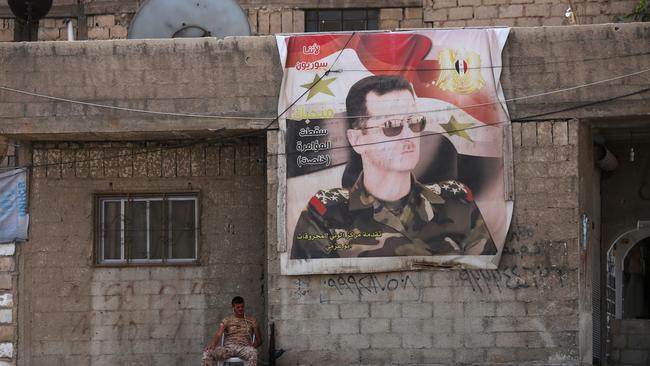
Assad’s father, Ba’th Party member and military officer Hafiz al-Assad, was installed as president in 1971 after a coup, and remained in power until his death in 2000.
The parliament moved within hours of his death to change the laws to drop the age a person could become president from 40 years to 34 years — the exact age of his third son, the London-educated Bashar al-Assad, who took over from his father.
The family are Alawites, a powerful Shia minority sect, and father and son have ruled through a combination of repression and largesse — brutally putting down any opposition, while rewarding family and allies with vast riches through government contracts.
THRONE OF SWORDS
A number of countries led by the UK had called for Assad’s removal, particularly following chemical weapons attacked carried out against Syrian civilians, but as his position was shored up by Russia and Iran, most in the west eventually accepted that regime change was not going to happen.
Former Australian foreign minister Julie Bishop said in April 2017 that while Assad had lost his legitimacy, it was clear he would have to be part of the transition to peace after the war.
“The precondition that Assad must go has been a condition in place for some time but most countries have moved on from that,’’ she said.
“There’s a recognition that President Assad, backed by Russia, will have to be part of a transition and how long he remains will be a matter of negotiation.”

Professor Serwer told News Corp that: “The West long ago gave up on a meaningful political transition in Syria.’’
“But that doesn’t mean one won’t happen,’’ he said. “But at this point it is more likely to come from within the regime than from outside it.’’
He said Assad was not behaving as if he believed he was safe from internal threats either.
“His security services are cracking down hard,’’ he said.
“Post-war situations often lead in unexpected directions … Assad owes a lot to his supporters and may be able to deliver very little. That said, he is ruthless and brutal. He may well be able to repress any opposition.’’
BLOOD PRICE
The war displaced 13 million Syrian people — seven million of them to other countries, mainly neighbouring Turkey, Jordan and Lebanon, who are pressuring Syrian to repatriate them. Six million more remain displaced within Syria, too afraid to go home — or having no home to go back to.
“Assad’s priority is ensuring his own safety and the security of his regime,’’ Professor Serwer said.
“He doesn’t want refugees and IDPs (internally displaced persons) to be able to return, as he assumes they are all regime opponents.
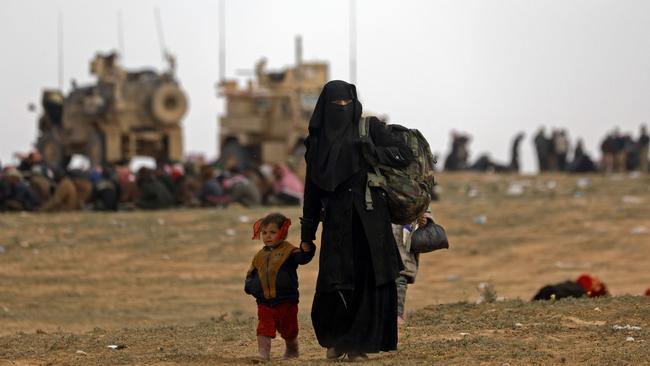
“His priority for institution-building will be the security services.
“He’ll entrust reconstruction to his family and friends, including Iran and Russia, rewarding them with contracts and concessions.’’
And what now for Islamic State, the offshoot of al-Qaeda which stepped into the power vacuum and became the highest-profile and most powerful of the myriad jihadi groups that grew out of the Syrian war?
ETERNAL JIHAD
The group which began life as an opposition force to the hated Assad regime grew rapidly to become a global force, encouraging and facilitating attacks against the west while establishing its own caliphate across Iraq and Syria.
At the height of its power in 2014, the group had declared an Islamic caliphate stretching over 88,000 square kilometres including the major cities of Raqqa in Syria and Mosul in Iraq with six million people under its control.
It took a global coalition of 79 countries including Australia, the UK, the US and France to destroy Islamic State — also known as ISIL (the Islamic State of Syrian and the Levant) and ISIS (the Islamic State of Syria and al Sham).
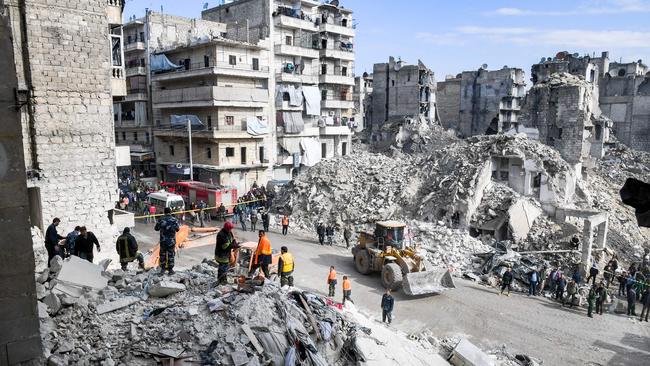
The Sunni Muslim terror group once controlled huge militias, oilfields, imposed taxes, and ran hospitals, schools and a pseudo-state headed by self-declared caliph Abu Bakr al-Baghdadi, a cleric from Iraq whose birth name was Ibrahim Awwad Ibrahim Ali Muhammad al-Badri al-Samarrai.
But in the past five years, the fighters have lost 99 per cent of their territory and are now holding out in a tiny area known as the Hajin pocket, on the banks of the Euphrates River near Iraq, where they are under sustained attack from the Syrian Democratic Forces, the Kurdish opposition group, and other forces including those from the western coalition.
Their women and children are emerging into the fields around the towns of al-Shaafa al Sha-Fah and Deir ez-Zur, starving and suffering from the cold, while the men who are captured are rounded up by the SDF and taken away to prison
MISSION ACCOMPLISHED
Australian journalist Martin Chulov, who writes for The Guardian, revealed that Baghdadi survived an attempt on his life last month when his own foreign fighters turned against him.
Chulov reported the incident happened on January 10 near Hajin, sparking a firefight between foreign fighters and Baghdadi’s bodyguards, who succeeded in spiriting him to safety in the desert nearby.
On December 19, the US President Donald Trump announced he would be withdrawing US troops because “we have defeated ISIS in Syria,’’ but his officials have since slowed down the time frame, tacitly acknowledging that, like an evil Hydra, Islamic State is not easy to defeat.
“The Caliphate is defeated. ISIS lives on,’’ Professor Serwer said.
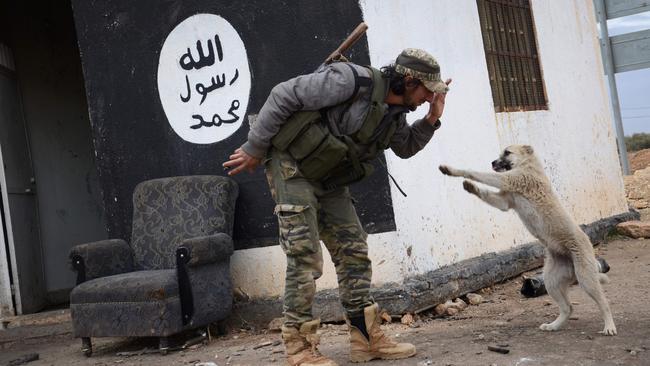
“ISIS has lost control over more than 90 per cent of the territory of its declared caliphate, but it is not completely defeated.
“It has franchises now in many other countries and will go underground in Iraq and Syria, reverting to terrorist vocation and abandoning the pretence of governing.’’
Professor Serwer said he hadn’t seen any evidence that Islamic State was now concentrating on attacks in the west.
“Nor do I think they will rebadge, as the Islamic State brand was very successful,’’ he said.
“They will regroup, but without trying to stake out territory, at least for now. That makes the jihadis easy targets.”
INVASION FORCE
Professor Serwer said he’d seen little evidence of foreign fighters returning to their home countries from the conflict, but “it may still be too early to tell.’’
And he said there were still Sunni communities which were vulnerable to recruitment by Islamic State, due to “local grievances, combined with the Islamic State’s broad appeal.’’
With its slick social media strategy and professional propaganda unit, Islamic State at its height attracted an estimated 30,000 foreign fighters to its cause, but the expected flood of jihadist returning to their home countries when the caliphate fell has failed to materialise.
Around 230 Australians are believed to have joined the group and around 130 of these thought to have died.
Several others, including Sydney man Ahmed Merhi, who is on death row in Iraq, and Melbourne man Neil Prakash, on trial in Turkey, were captured. Others have simply vanished. Not one senior Islamic State fighters has been returned to Australia to face the courts.

On January 29, the US director of National Intelligence Dan Coats released the annual Worldwide Threat Assessment, which made clear that Islamic State retained a presence in Iraq and Syria, and that Bashar al-Assad also remained large and in charge. He also warned terrorism “in some ways’’ could increase in 2019.
“President Bashar al-Assad has largely defeated the opposition and is now seeking to regain control over all of Syrian territory,’’ the grim assessment read.
“Remaining pockets of ISIS and opposition fighters will continue to stoke violence.
“Terrorism remains a persistent threat and in some ways is positioned to increase in 2019.
“The conflicts in Iraq and Syria have generated a large pool of skilled and battle-hardened fighters who remain dispersed throughout the region.
“While ISIS is nearing territorial defeat in Iraq and Syria, the group has returned to its guerrilla-warfare roots while continuing to plot attacks, and direct its supporters worldwide.
“ISIS is intent on resurging and still commands thousands of fighters in Iraq and Syria.’’
Originally published as Eight years of death, destruction and misery. Now Syrians are asking, ‘what was it all for’?


